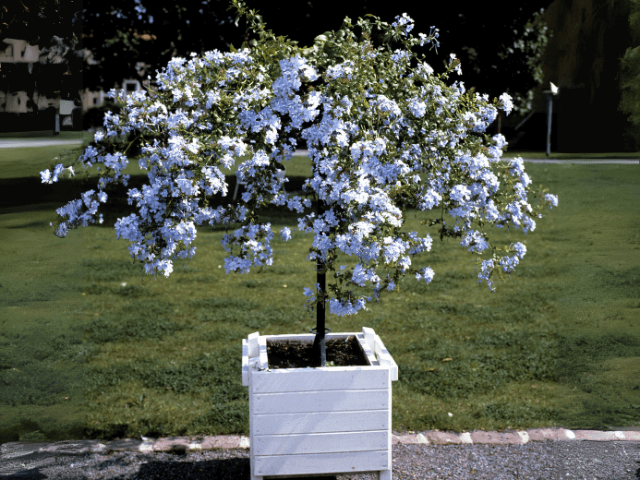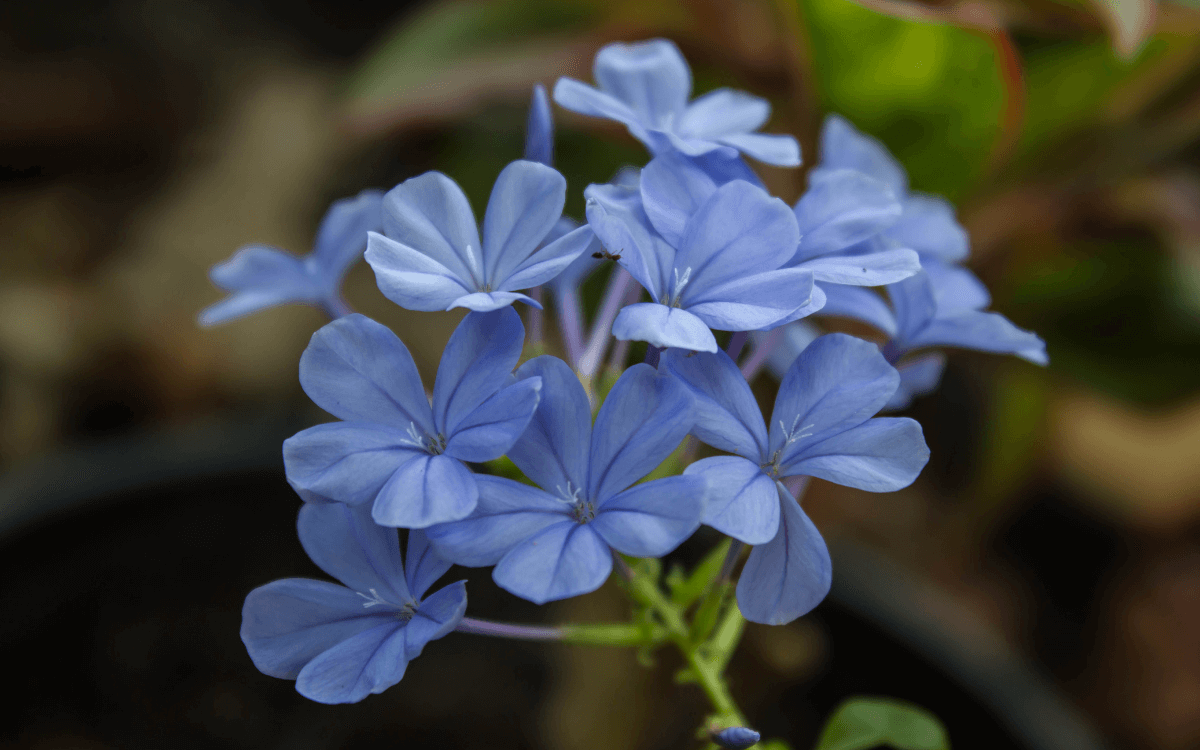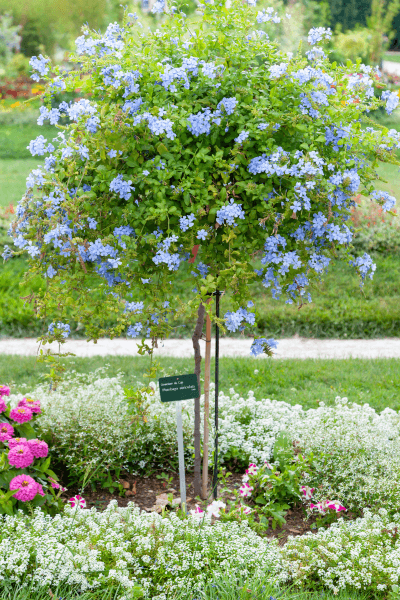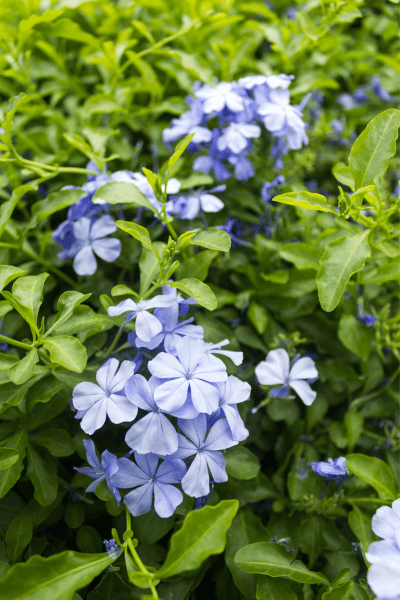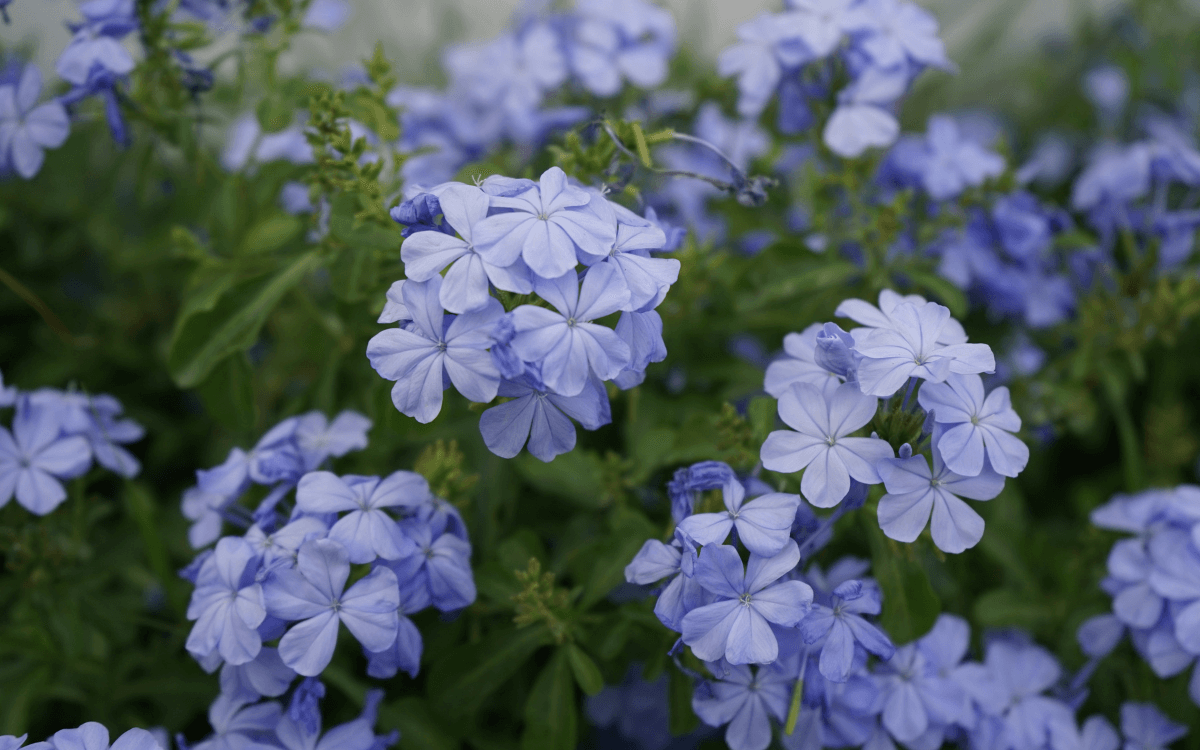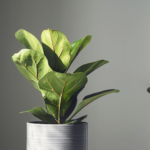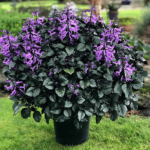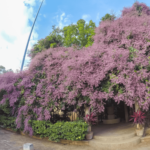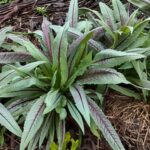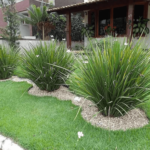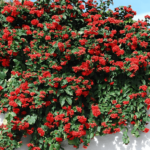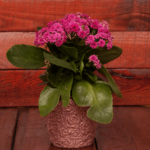Plumbago auriculata, popularly known as Leadworts or Plumbago plant, is a perennial shrub that stands out for its beauty.
This plant is native to South Africa, but over the years it has spread around the world thanks to its adaptability and the long flowering season it offers.
In this text, you will get to know the various characteristics of Plumbago, from its aesthetic properties to its uses and cultivation, so keep reading.
Where to Plant
Ideal for tropical-style gardens, Plumbago auriculata thrives in sunny areas.
Its ability to grow several meters, especially when supported by tutors, makes this plant a great option for gardens, terraces, and walls.
Landscaping and Use
The versatility of Plumbago allows its use in various ways in landscaping.
Whether as a solitary plant, in groups, or in rows along walls and fences, it adds beauty and color to the environment.
Additionally, it can be used as a climber, providing coverage for vertical structures. The attraction of birds and butterflies to the garden is an additional advantage.
Lighting and Temperature
One of the distinctive characteristics of Leadworts is its preference for warm and well-lit conditions.
The plant thrives under direct sunlight exposure, requiring at least 6 hours of direct sunlight daily to bloom abundantly.
Despite its tolerance for a wide range of temperatures, Plumbago auriculata exhibits optimal growth in temperatures above 20 ºC, thriving in environments that provide warmth and light.
However, although tolerant to cold, it is sensitive to frosts, which requires special care or protection during the colder months in regions prone to temperatures below zero.
Read too:
- Maidenhair fern (Adiantum spp.) – Care Guide
- Ficus Pumila (Creeping Fig): How to Care and Propagate
- Tillandsia Air Plants: Species and Care (With Photos)
- Vanilla Orchid: How To Plant, Care and Grow (With Photos)
- Spanish Moss: Care, Characteristics and Curiosities
- Hornwort (Ceratophyllum demersum): How to Care
Soil
The ideal soil for Plumbago should be well-drained and rich in organic matter.
This composition favors the retention of essential nutrients while preventing excessive water accumulation, mitigating the risk of root rot.
Adding bone meal to the soil is a recommended practice to enrich it, providing a fertile environment that stimulates healthy plant growth.
Soil pH
This plant thrives well in ranges from slightly acidic to slightly alkaline (pH between 6.0 and 7.5).
However, it’s important to monitor the pH, especially in alkaline soils, to avoid mineral deficiencies that can lead to symptoms like yellowing leaves.
Soil for Pot Cultivation
In pot cultivation, it’s important to ensure effective drainage to prevent soil waterlogging.
A drainage layer, such as sand, gravel, or expanded clay, should be placed at the bottom of the container before adding the prepared soil.
The use of high-quality organic compost can offer excellent nutritional support for the plant in controlled environments.
How to Water
Plumbago requires regular watering to keep the soil consistently moist, but never waterlogged.
Watering frequency should be adjusted according to the climate conditions, with more frequent watering during the hotter and drier months, and reduced during cooler or more humid periods.
Before watering, check that the top layer of soil is dry to the touch.
Below are some more useful tips for watering your plant.
- When watering Plumbago auriculata, it is advisable to direct water straight to the soil, avoiding wetting the leaves and flowers.
- Signs of water stress, such as wilted or discolored leaves, may indicate the need to increase the frequency of watering, while the appearance of fungi or root rot may signal excessive moisture.
How to Fertilize
It is recommended to use bone meal and organic fertilizers to enrich the soil in which Plumbago will be cultivated.
These fertilizers contribute to a gradual release of nutrients, avoiding the risk of root burn that can occur with chemical fertilizers.
Worm castings and well-rotted manure are also excellent choices to provide a rich and nutritious base for the plant.
Fertilization should be done moderately during its most active periods (spring and summer).
Application
When applying fertilizer, it is important to distribute it directly over the soil, avoiding direct contact with the plant’s stem and leaves.
For chemical fertilizers, follow the specific usage and dosage instructions of the chosen fertilizer, as this will prevent excess nutrients, which can be harmful.
For granulated or liquid organic fertilizers, place them in the soil, around the base of the plant, facilitating the absorption of nutrients by the roots.
Replanting
Replanting should be considered when the plant’s roots begin to show signs of crowding in the current pot or when there are indications that the substrate is becoming old.
The best time for this activity is during spring or autumn.
Use new, nutrient-rich soil and ensure proper drainage in the new location or pot to prevent water stagnation.
Pruning
Pruning is essential not only to maintain the desired shape and controlled size of Plumbago but also to stimulate flowering.
Perform pruning at the end of winter or the beginning of spring, eliminating all dry, damaged, or diseased parts.
Pruning every two to three years is recommended to promote plant renewal and encourage flowering.
Propagation
Propagation can be done through cuttings.
- Choose healthy branches and cut them into segments of approximately 10 to 15 cm.
- Remove leaves from the lower third and, if possible, apply rooting hormone to stimulate root development.
- Plant the cuttings in moist and well-drained substrate, keeping them in a location protected from direct sunlight until they root.
Early spring or late summer are the most favorable periods for propagation.
Pests
Leadworts can be attacked by aphids, scale insects, mites, and other sucking insects.
These parasites drain the sap from plants, weakening them, and in severe cases, can lead to plant death.
The presence of these pests is often indicated by curled, wilted, yellowed, or sticky-covered leaves.
Characteristics
Plumbago is a semi-woody climbing shrub that can grow up to 3 meters. It grows fast and can be planted in various ways: alone, in groups, or as a climber on walls and fences.
Its leaves are light green and can have various shapes, such as oval or elliptical. The flowers, which range from white to light blue, form small and delicate bouquets.
Its flowering occurs mainly from November to May in the southern hemisphere and from May to November in the northern hemisphere, bringing color to gardens for long periods.
The flowers, arranged in clusters, have a complex shape with five petals joined and a small hidden fruit, which uses animals to spread its seeds, aiding in its dispersal.
This shrub, in addition to making the place more beautiful with many flowers, attracts birds and butterflies, helping to increase biodiversity.
This was our article on Plumbago, if you have any questions, leave a comment below and, if you liked this text, share it on your social networks by clicking the icons below.

